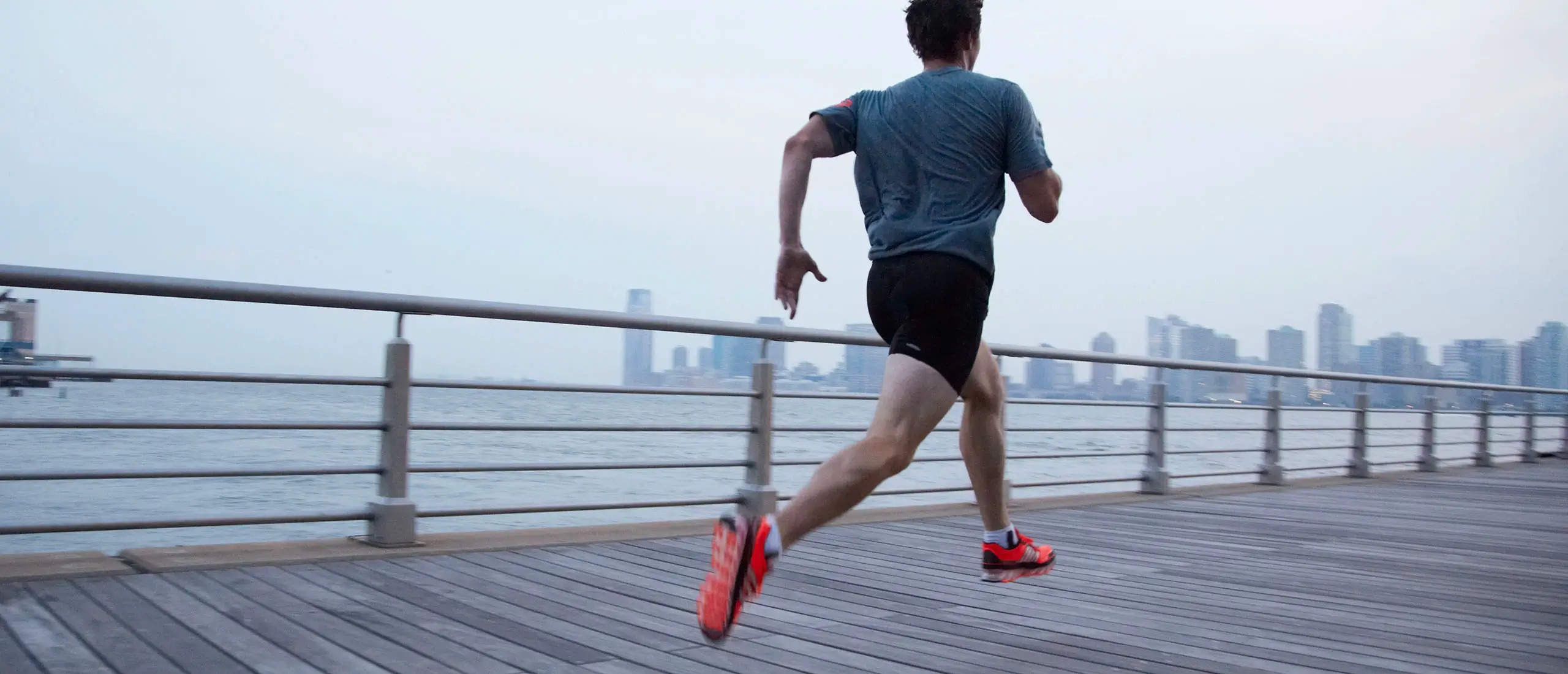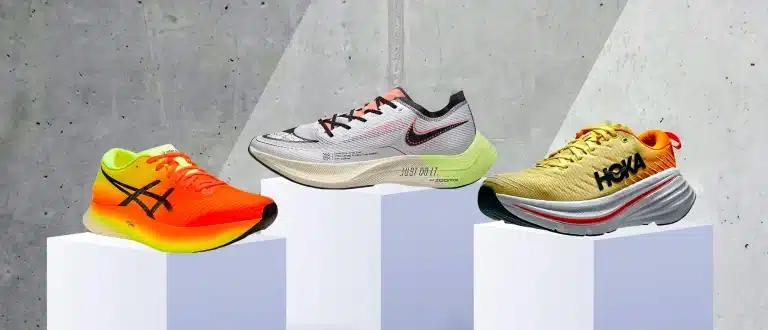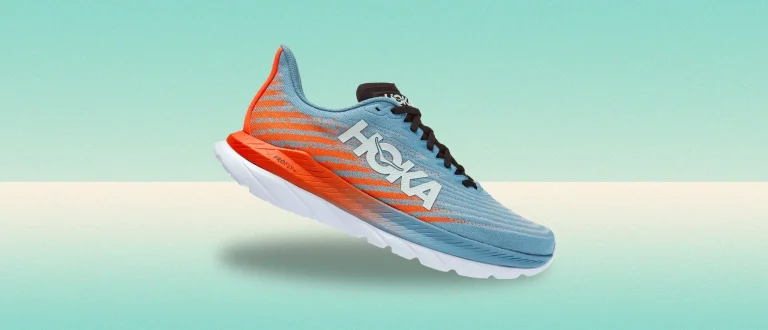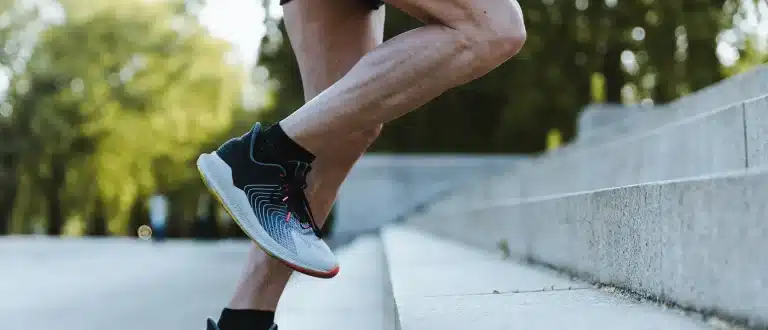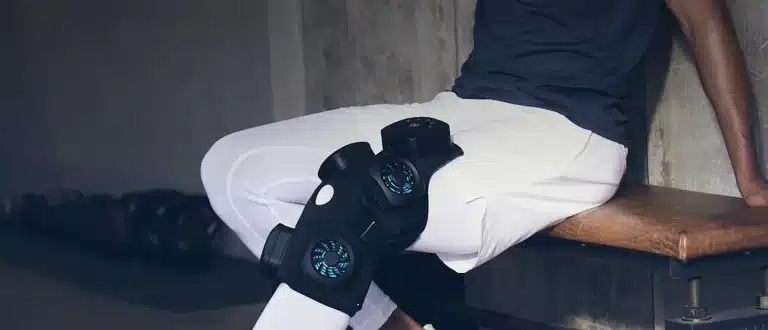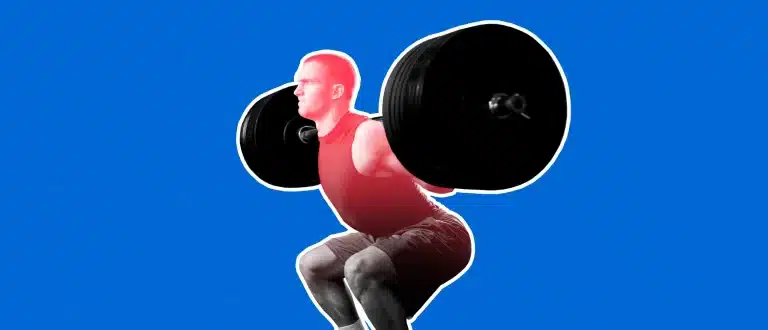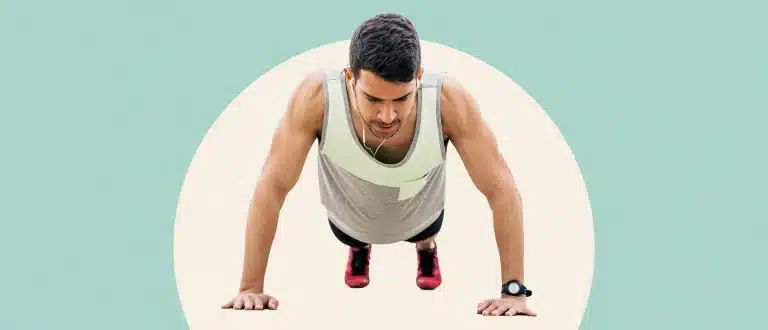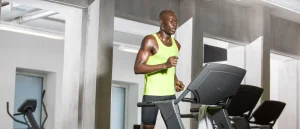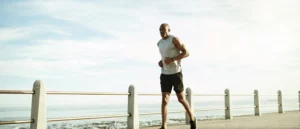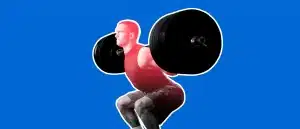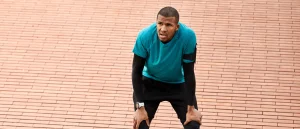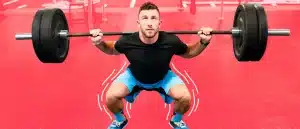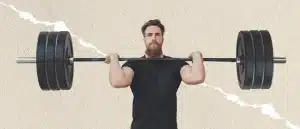The Exact Muscles You Activate When Running—and How to Injury-Proof Them
There’s nothing like the rush of endorphins that comes with a famed runner’s high. Except, perhaps, the knowledge that each challenging run can extend your health and lifespan, build endurance, and functionally strengthen most of the major muscle groups in your body.
What muscles get the job done, exactly? The heavy hitters are the glutes, quads, hip flexors, hamstrings, and calf muscles; but, it’s technically a full-body effort since your core, and arms are involved to some degree.
Because running is high-impact, it places a heavy burden on all of the muscles, ligaments, and tendons involved. Understanding how your muscles work together to power your run can help you optimize your strength, mobility, and stability to stave off common running injuries and increase the efficiency of your stride.
Whether you’re jogging down the street (kudos for getting in your zone 2 training) or sprinting on the track, here are the exact muscles to pay attention to and how to care for them.
How Your Gait Impacts the Muscles Running Works
There are two main phases of a runner’s gait:
- Stance: the time your foot is on the ground
- Swing: the time your foot is in the air
Together they’re known as your gait cycle. Different muscles are involved in different phases of the gait cycle. In general, perfect running form should be accompanied by a stable foot, mobile ankles, stable knees, mobile hips, and a stable core so that your muscles can work as intended through each phase. If they do, you’ll improve your running economy—how your body uses energy as you run—and therefore, speed.
When one muscle group is over or underactive, however, it can cause unwanted compensations in surrounding muscles. Movement compensations can zap energy and result in injuries. For example, a stiff ankle causes your foot to take on the mobility role, causing you to give up critical stability in your arches. This can lead to a variety of foot woes like plantar fasciitis, bunions, and metatarsalgia (pain in the ball of the foot).
Similarly, tight hip flexors and quads can shorten your stride, and inhibit your powerful glute muscles. One study in the International Journal of Sports Physical Therapy attributed weak glutes as a risk factor for knee pain, ACL injuries, low back pain, hamstring strains, and ankle sprains (1).
What Muscles Does Running Work?
The exact muscles you use when running, and how to strengthen and stretch them to increase speed and efficiency, and defend your body against running injuries, below.
Feet
When we think about muscles, we often forget about the feet; but they’re made up of 10 foot and ankle muscles, and 19 intrinsic muscles (2)—most of which are involved at some stage in the gait cycle. With each step, your foot takes on the force of impact. When it does, it momentarily acts as a flexible shock absorber by slightly pronating (collapsing inward), then quickly stiffens to propel you forward.
Issues can crop up in runners who overpronate—when the foot rolls inward and arches collapse excessively—and supinate—when the foot doesn’t roll in enough—both of which lead to inefficient shock absorption. If you deal with these issues, look for a running shoe that corrects your natural gait cycle.
Then, try these simple exercises to build foot stability:
- Piano Toes: Play an imaginary piano with your toes.
- Towel Scrunches: Put a towel on the ground and scrunch the towel with your toes.
- Arch Lifts: Lift your arch while pressing your toes into the ground.
- ABCs: Draw the alphabet with your toes, taking your time to loop each letter.
Calves
The two muscles that make up your calves—the gastrocnemius and soleus—work together to stabilize the lower leg on impact, and power you to spring upwards and forwards on take-off.
There are few activities in real life that prepare your calves for the repetitive and demanding load of running. This is why sharp increases in training load (volume, intensity, and frequency of training) in both new and experienced runners often lead to tight and achy calves.
If tight calves aren’t addressed, the problem most runners face is two-fold: calf weakness (which can cause calf tightness) and calf tightness (which can lead to other injuries like shin splints). That’s why both strengthening and stretching the calves is important.
Try these exercises to strengthen the calves:
- Calf Raises: Stand on the edge of a step with your heels dangling off the edge. Use your calves to raise upwards. Pause at the top, with toes spread wide. Lower slowly to the starting position, getting a full stretch. Repeat for 15 reps.
- Jump Rope: Jump on the balls of your feet over a rope. Make sure you land on your toes rather than on your heel. This will activate your calves. Try to build up to five minutes without stopping.
Try these stretches to reduce calf tightness:
- Calf Stretch: Stand with one foot on the edge of a step with your heel dangling off the edge, and the other foot relaxed. Stretch for 30 seconds, and repeat on the other side.
- Soleus Stretch: Stand with one foot on the edge of a step with your heel dangling off the edge, and your knee slightly bent. Stretch for 30 seconds, and repeat on the other side.
If your calves are a recurring problem, consider investing in a slant board which is great for building calf strength and flexibility.
SHOP SLANT BOARDS
Quads and Hip Flexors
Located in the front of the thigh, the quadriceps (quads) are a group of four muscles that work eccentrically to stabilize and absorb impact as you land. This control prevents your knee from buckling under the load of your body weight and propels you forward—transferring energy to the hamstrings as you shift from stance to swing phase.
As you drive forward, your quads work together with the hip flexors (psoas major and iliacus) to flex your knee and leg up to your body at push-off.
Most runners are “quad dominant,” meaning they compensate by shifting more of the work from their hamstrings and glutes to their quads. The issue is when compensating, runners might swing the leg too far in front of them, using the hip flexors rather than the hamstrings and glutes to propel themselves forward. This can lead to overactive (and tight) quads and underactive (or weak) glutes and hamstrings, which can compromise running efficiency, and lead to muscle imbalances and postural problems.
Try these stretches to reduce quad tightness:
- Quad Stretch: Lie on your side and pull the foot of the top leg towards your glutes. Tuck your pelvis to feel a deeper stretch. Stretch for 30 seconds, and repeat on the other side.
- Half Kneeling Hip Flexor Stretch: From a kneeling position place the left knee on the floor directly under the left hip, and place the right foot in front of the right hip so that the right knee is directly over the right ankle and the right hip is in a position of 90 degrees. Activate the left glute to drive the left hip forward, feeling the stretch in your left hip flexor. Stretch your left arm overhead and to the right to deepen the stretch. Hold for 30 seconds, repeat on the other side.
- Quad Foam Roll: Slowly foam roll up and down the quad muscle, covering the quad muscles from your hips to your knee. When you find a tender spot, hover over the spot for 30 to 90 seconds until pressure is reduced. Continue rolling to look for more tight spots.
For best results, pair these stretches with a glute and hamstring strengthening routine.
SHOP FOAM ROLLERS
Hamstrings
The hamstrings are nestled in the back of the thigh between your hips and knee. They act to extend the hip, flex the knee, and control the movements of your lower body. When running, their most important job is to produce force at push-off.
If you want to run faster, strong hamstrings are a must.
The problem? Most runners have weak hamstrings, as opposed to the quads which tend to take on the brunt of the work. Strengthening the hamstrings, and practicing drills to improve your overall gait pattern can work wonders for your speed, efficiency, and comfort as a runner.
Try these moves to strengthen your hamstrings:
- Single Leg Deadlift: Stand with your feet together, holding a dumbbell in each hand in front of your legs. Shift your weight to your right leg, with a slight bend in the right knee. Hinge at the hips to lift your left leg off the floor, lowering the weight to the floor. Brace your core, and keep your back flat, activating your lats to keep your shoulders back and down. Once you feel a full stretch in your hamstring, return to standing. Complete 10 to 12 reps on each side.
- Single Leg Hamstring Curl: Anchor a resistance band close to the ground, then lie facedown on a mat facing away from the band, and loop your feet around the end of the band. The band should be taut in this position, if it’s not scoot your body forward until it is. Curl one leg up to your butt, keeping the other stationery. Alternate, completing 10 to 12 reps on each side.
Glutes
Like the hamstrings, the glute complex (gluteus maximus, minimus, and medius) plays a key role in propelling your body forward. The gluteus maximus works to extend the hip as you push off the ground, and the gluteus minimus and medius work together to shift your weight from side to side. If the glutes can’t effectively transition from one leg to the other, the hamstrings or hip flexors may step in.
The gluteus minimus and medius also stabilize the pelvis. The ability to globally control the pelvis during running directly affects the spine above, and the knees and feet below. That’s why underactive glutes give runners serious problems.
To avoid them, take a two-pronged approach. First, stretch and foam roll the quads and hip flexors to promote the hip mobility needed to activate the glutes. Then, try these exercises to strengthen your glutes:
- Single Leg Glute Bridge: Lie on the floor face up with your knees bent and feet flat on the floor. Engage your core and tuck your pelvis to press your low back into the floor. From here, lift your right foot off the floor and extend your leg. Push through your left heel to lift your hips off the ground. Slowly lower and repeat for 10 to 12 reps on each side.
- Fire Hydrants: Start on your hands and knees with hands directly below your shoulders and knees directly below your hips. Contract your glutes to raise your right knee directly to the side, keeping your knee at a 90-degree angle. Pause at the top (or pulse to improve glute control at the end range of motion), slowly lower, and repeat for 10 to 12 reps on each side.
Core
Talk to any running coach and they’ll hammer the importance of a strong core. Why? The core is your main source of stability as you run. When upright, your rectus abdominis creates the stability your lower body needs to generate force and power, and your transverse abdominis and obliques act to counter the rotational forces that occur with each step to keep you moving forward.
The intrinsic muscles like your diaphragm and pelvic floor are important, too. When your diaphragm contracts properly it helps supply your body with more oxygen, and your pelvic floor activates just before contact to match the force. Plus, one study (3) suggests pelvic floor activation increases substantially as your running pace gets faster (yes, Kegels are for guys, too).
An article published in Sports (Basel) found that core and upper body fatigue detracts from running economy (4), which is why a strong core is so important.
Try these exercises to strengthen your core for running:
- Dead bugs: Lie on the floor faceup with your arms extended and hands and elbows stacked directly above your shoulders, knees bent at a 90 degree angle and stacked above your hips. Engage your core and tuck your pelvis to press your low back into the floor. Extend your right arm to the floor above your head while simultaneously straightening your left leg and hovering just above the floor. Return to the starting position and repeat for 10 to 12 reps on each side.
- Planks: To start the exercise, get into a high plank position with your palms stacked directly below your shoulders, and legs straight. Tuck your tailbone slightly by maintaining tension in your glutes and core. Press your heels towards the wall behind you, and roll your shoulders back to activate your lats. Hold here for 30 seconds.
Upper Body
If you’ve ever had a coach aggressively yell at you “swing your arms!” they were on to something. Running predominantly works your lower body, but your arms swing works synergistically with your lower body to build momentum. Plus, it makes your run more efficient.
The muscles in your arms (biceps and triceps), shoulders (deltoids and rotator cuff muscles), chest, and upper back (latissimus dorsi, trapezius, and rhomboids) work to drive your arms forward and support good running posture.
A collapsed chest limits your breathing capacity, which curbs the amount of oxygen and nutrients delivered to your working muscles. Exactly why having a strong back and shoulders can help enhance running economy.
Try these exercises to strengthen your upper body for running:
- Pushups: Start in a high plank, with wrists stacked below shoulders (or just slightly wider), feet together, and back straight. Keep your core tight and lower your body with control. Lower your body until your chest hovers an inch or two above the ground. Explosively drive up by extending your arms. Recenter in a solid high plank before repeating for 10 to 12 reps.
- Bent Over Rows: Stand holding a barbell or dumbbells with your palms facing down. Bend your knees slightly and lean forward by bending at the waist. Keeping your back straight, and elbows close to your body, row the barbell towards your chest, squeezing your back muscles. Slowly lower to the starting position and repeat for 10 to 12 reps.
Not recovering from your workouts? Low T might be the culprit. Hone’s testosterone assessment is the simplest way to uncover whether your levels are low. It’s fast, simple, and you can do it from home.
What About Running Up or Downhill?
Running uphill and downhill will change the work (and stress) placed on your muscles. Running downhill is easier on your cardiovascular system, but it puts extra load on your hips, legs, and ankles.
Your hamstrings, glutes, and quads all work harder to eccentrically control each step and reduce impact. It can also be more jarring on the knees and shins which can contribute to running injuries like runner’s knee or shin splints.
When you run uphill, on the other hand, your muscles have to work harder to overcome gravity. In fact, one study found when compared to walking with no incline, walking on a grade of nine degrees resulted in a 635 percent increase in hamstring activation, and a 345 percent increase in gluteus maximus contraction (5).
You can expect a similar rise in activation when running. Uphill running will also naturally shift your stride to a mid to forefoot strike which puts more pressure on your calves and ankles—it also makes it easier to push off the ground for your next step.
Can I Build Muscle By Just Running?
Yep. Aerobic exercise can build more muscle. According to a review of research, published in Exercise Sport Science Review, there’s considerable evidence that cardio, like running, can result in muscle hypertrophy (or growth) (6). The faster you run—like sprints or a HIIT workout, for example—the more your run serves to indirectly strengthen your legs.
Just don’t confuse running with a strength workout. Sure, it’s a great way to build muscular endurance, and you can add in some hill training to increase muscle activation. But don’t expect it to yield the same hypertrophy gains as a strength training routine.
Can You Get Abs From Running?
Running uses and strengthens the intrinsic and extrinsic muscles of your core (including your abs). So yes, it can help give you defined abs. It’s also great for burning calories—and thus, fat. Burning fat can help reveal the muscle hiding underneath, but you have to have strong abs in the first place. Supplementing your runs with a well-rounded core routine will help sculpt your core, and strengthen it for better running economy. A win-win.
References
1. Buckthorpe, M. et al (2019). Assessing and Treating Gluteus Maximus Weakness—A Clinical Commentary. https://www.ncbi.nlm.nih.gov/pmc/articles/PMC6670060/
2. Card, R. et al (2022). Anatomy, Bony Pelvis and Lower Limb Foot Muscles. https://www.ncbi.nlm.nih.gov/books/NBK539705/
3. Shaw, J. et al (2018). Role of Chronic Exercise on Pelvic Floor Support and Function. https://www.ncbi.nlm.nih.gov/pmc/articles/PMC5433620/
4. Drum, S. et al (2019). Trunk and Upper Body Fatigue Adversely Affect Running Economy: A Three-Armed Randomized Controlled Crossover Pilot Trial. https://www.ncbi.nlm.nih.gov/pmc/articles/PMC6722636/
5. Franz, J. et al (2013). The Effects of Grade and Speed on Leg Muscle Activations During Walking. https://www.ncbi.nlm.nih.gov/pmc/articles/PMC3262943/
6. Konopka, A. et al (2015). Skeletal Muscle Hypertrophy After Aerobic Exercise. https://www.ncbi.nlm.nih.gov/pmc/articles/PMC4523889/



